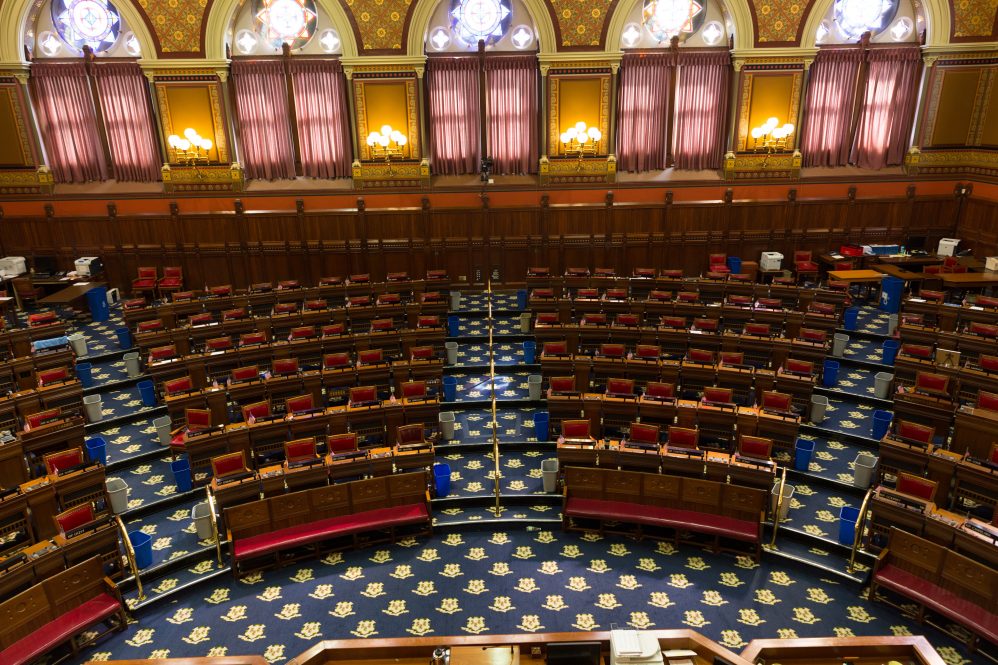To tackle the climate crisis, policy change is needed to arrive at a more resilient and sustainable world, but the legislative process takes time. That’s why experts at the Connecticut Institute for Resilience and Climate Adaptation (CIRCA) are working to help clarify the legal and policy-making processes that make improvements possible.
Louanne Cooley ’20 JD is a CIRCA Legal Fellow, and member of the project team looking at Legal and Policy Tools for Climate Resiliency at the State and Local Level. This is the subject of Cooley’s CIRCA June 2021 Research Webinar Series talk, scheduled for June 25, in which she will discuss the work she and CIRCA Director of Applied Research and UConn School of Law Professor-in-Residence Joseph MacDougald have undertaken.
Cooley says the project involves initially analyzing what other states have done legislatively to fund, design, operate, and maintain infrastructure to increase climate resilience and adaptability.
“We’re looking at ways we can help facilitate implementation of policies the state legislature has enacted to help municipalities fund resilient infrastructure projects,” she says. “We do this by looking at what other states have done and drawing on their experiences. We’re mostly looking at the other coastal New England states, but also coastal states in the Gulf and West coasts.”
Cooley says the other facet of the project is to evaluate the specific needs of municipalities and develop a framework with model ordinances that could then be modified to help advance resilience at the local level. Additionally, the legal policy team will produce explanatory documents that will help municipalities determine how the newly enacted statutes will best benefit the needs of their community.
Connecticut has had climate advocates for years, and recently even more work has been underway, says Cooley.
“We are supporting the work of the Governor’s Council on Climate Change, who have developed an action plan through a year-long process by many specialized working groups focusing on different areas of the climate project for the state of Connecticut,” Cooley says. “We will assist in explaining about the various legal authorities recently enabled by the state that would be helpful for municipalities and would give them the ability to fund, design, operate and maintain infrastructure, in particular, that would be climate resilient and adaptable.”
One example of what Cooley has focused on are existing legal authorities in other states that create stormwater utilities and the expansion of existing municipal legal authorities to encompass resilient infrastructure.
“For example, a lot of towns have a flood or erosion control board. A bill was just passed through the Connecticut House and Senate that included both stormwater authorities and expansion of the flood and erosion control boards to expand the tools municipalities have to fund and finance climate adaptation and resilience projects. The value of that for a town is that most people can agree when you’re trying to improve infrastructure with the future in mind, you need to make the infrastructure as resilient to the impacts of climate change as possible,” says Cooley.
“This helps us figure out whether or not we’re on the right track, or what kinds of things we should be thinking about,” she says. “With the stormwater authority example, Connecticut’s a little bit late to the game on that, but that’s okay, because it means that there are a lot of good examples out there from municipalities of all sizes. This isn’t something that’s just for big cities or big towns, it is a useful tool regardless of size because it’s scalable.”
In terms of consistency in looking at how to address the climate crisis, Cooley says Connecticut is on the right path.
“Connecticut is really on track with the region, which is important because, as you know, the climate doesn’t see borders. Having consistent policies in in regions is, I think, really helpful.”
To learn more, you can view the project’s fact sheet here.



